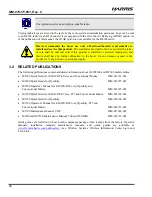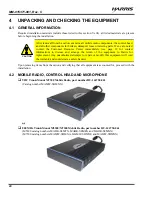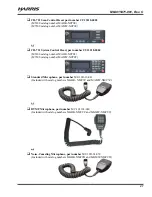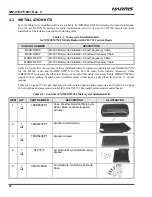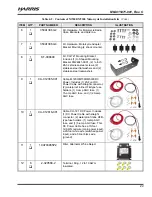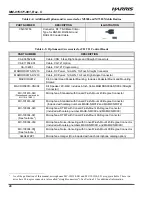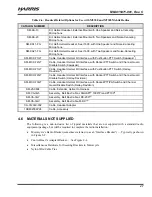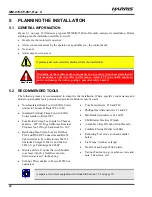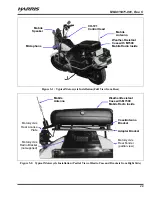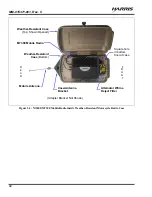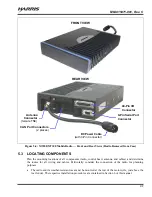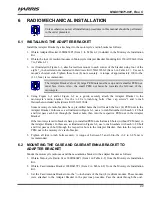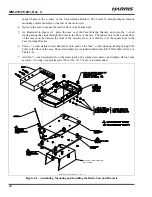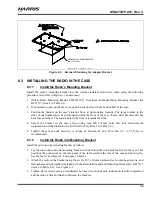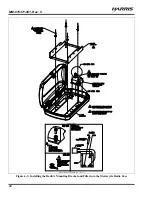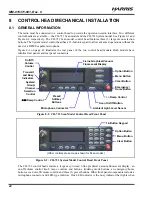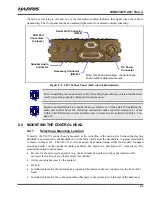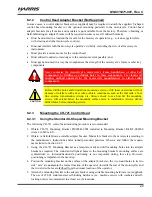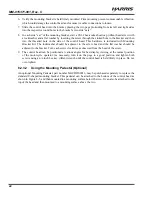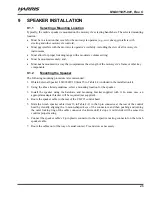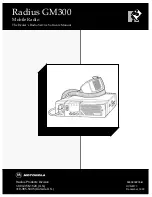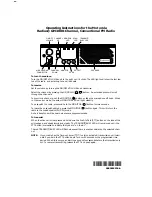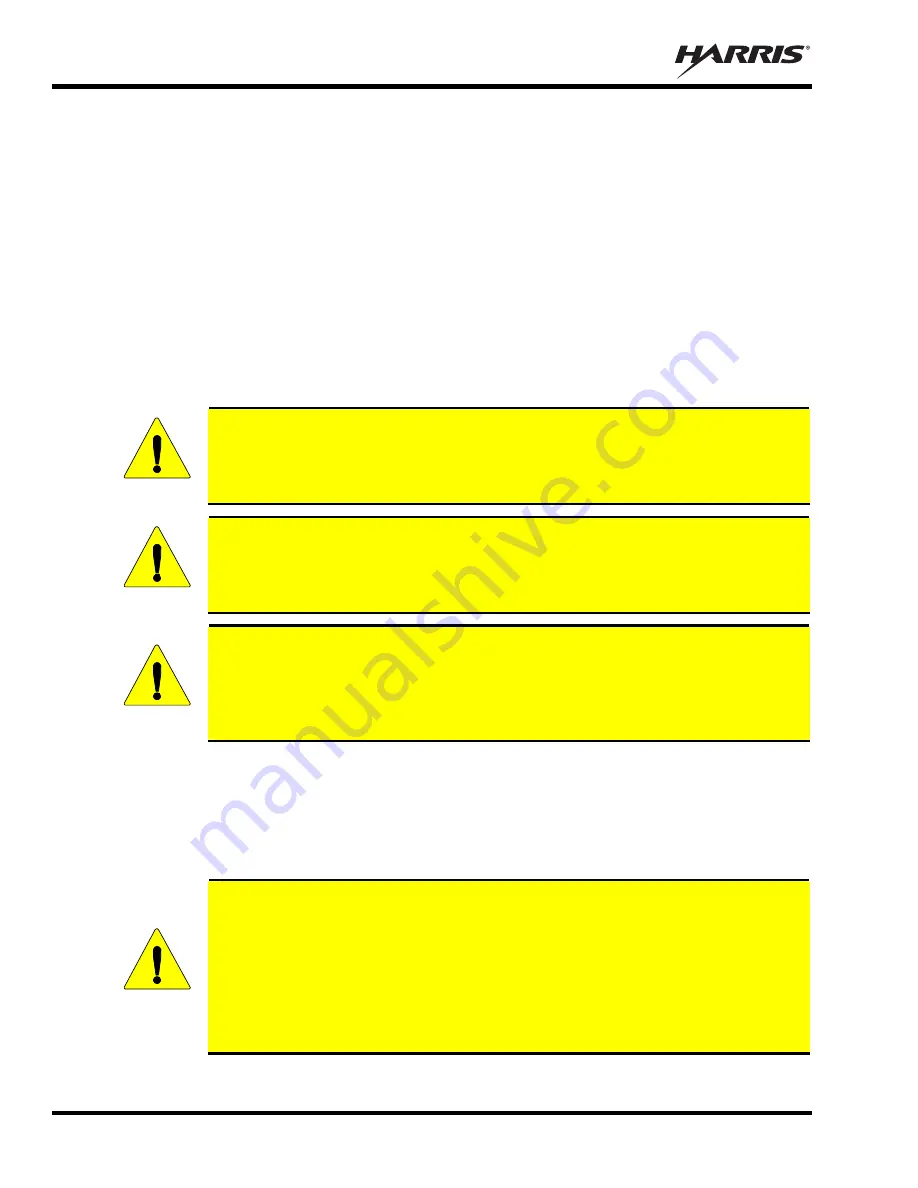
MM-015371-001, Rev. C
32
The mobile antenna must be mounted at the rear of the motorcycle on the supplied case/antenna
bracket. For specific antenna installation-related information, refer to Section 7 of this manual.
The CH-721 control head must be mounted at the front of the motorcycle, on the handlebars. The
respective installation procedures are contained in Section 8 of this manual.
Radio and control head dimensions are listed in Section 2.1 on page 12. Several inches of clearance
space is required at the back of the control head.
For other mobile radio related components such as the microphone and speaker, determine the
customer’s preferences if any, for mounting locations. Comply with these preferences as long as they
are consistent with safety recommendations and guidelines presented in this manual, and other
generally accepted professional radio installation practices.
Verify the drilling of holes and the insertion of screws will not damage or interfere with any existing
vehicle components (for example, a fuel tank, fuel lines, the transmission housing, etc.), or any
existing vehicle wiring.
CAUTION
The radio must be kept out of direct sunlight and away from heat sources. Adequate
free-air ventilation must be provided to its rear fins. The radio will automatically reduce
its transmit RF output power when its ambient temperature exceeds approximately
+140° Fahrenheit (+60° Celsius).
CAUTION
All cables should have a service loop near each connector end. Do not bend the cables
at severe angles near the connector end. Above all, after all components are installed,
verify no cable is under any tension. Failure to do so may lead to damaged cables,
causing intermittent radio operation or complete radio failure.
CAUTION
Before drilling holes and/or installing mounting screws, verify these operations will not
damage or interfere with any existing vehicle components such as the fuel tank, a fuel
line, engine, transmission, wiring, etc. Always check to see how far the mounting
screws will extend below the mounting surface prior to installation. Always deburr
drilled holes before installing screws.
5.4 DC POWER CONSIDERATIONS
Careful consideration must be given to total direct current (DC) power drain on the motorcycle’s
electrical system (e.g., battery, alternator, wiring, etc.) The motorcycle may be equipped with additional
lights, light flashers, siren, public address (PA) system, etc. that, in addition to the mobile radio, place
additional drains on the system. Refer to Section 2 on page 12 for the applicable specifications.
CAUTION
Any DC input power provided to the radio shall be no higher or lower than
13.6 volts DC
10%. The DC input power should be free and clear of any AC noise or
DC spikes above 18 volts. If the vehicle cannot meet these requirements, then DC
conditioning will be required before any DC is connected to the radio. This includes
conditioning for both the radio’s main DC power input lead and for its switched ignition
sense power input. DC conditioning can be accomplished by a noise filter or DC
isolation equipment such as Harris part number FL-018314-001 or FL-018314-002, or
similar units equal specifications. Contact TAC for additional information.

